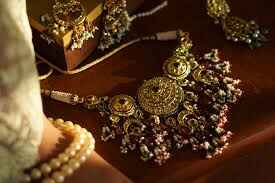More Than Mere Robes
When you step into a Catholic church during Mass, your eyes naturally drift to the altar where the priest stands draped in flowing white beneath layers of coloured silk and embroidered gold. These aren’t simply ceremonial costumes or theatrical props—they’re the liturgical purpose and symbolism of vestments like priest albs speaking a silent language that’s older than most of the cathedrals housing them.
The humble alb, that plain white garment peeking out from beneath the more ornate outer vestments, might seem unremarkable at first glance. Yet this simple linen robe carries within its folds centuries of tradition, theological meaning, and spiritual significance that would make even the most elaborate royal regalia seem shallow by comparison.
I’ve spent years studying these sacred garments, and what fascinates me most is how they manage to be both utterly practical and profoundly mystical. Each thread, each fold, each carefully chosen colour tells a story that connects the priest celebrating Mass today with the apostles who first broke bread in Christ’s name.
The Historical Roots of Liturgical Vestments
The story of priestly vestments begins not in grand cathedrals but in the everyday wardrobe of ancient Rome. Early Christians didn’t set out to create special religious clothing—they simply kept wearing what everyone else was wearing whilst the fashion world moved on around them.
Picture the Roman tunic, a basic ankle-length garment that was the equivalent of today’s business casual. As Roman fashion evolved towards shorter, more fitted clothing, the Church maintained these flowing robes. What started as practical everyday wear gradually transformed into something sacred through the simple act of preservation.
This wasn’t mere conservatism—it was theological genius. The Church recognised that certain symbols transcend temporary fashion trends. By maintaining these ancient forms, they created a visual link between the contemporary Mass and the earliest Christian celebrations. Every time a priest dons his alb, he’s literally clothing himself in a tradition that stretches back to the catacombs.
The development wasn’t uniform across the Christian world. Eastern Orthodox traditions maintained their own distinctive styles, whilst Western Christianity evolved its particular forms. Yet the underlying principle remained constant: these garments serve to separate the sacred from the secular, creating a visual boundary that helps both priest and congregation enter into the mystery of worship.
Symbolism of the Alb – Purity Woven in Linen
The alb derives its name from the Latin “alba,” meaning white, and this colour choice is anything but arbitrary. White has been the colour of purity, innocence, and divine light across cultures for millennia, but in Christian symbolism, it carries specific baptismal significance.
When a priest puts on his alb, he’s symbolically clothing himself in the same white garment placed on every newly baptised Christian. This connection runs deeper than mere symbolism—it’s a theological statement about the priesthood of all believers. The alb reminds us that before the priest was ordained, he was baptised, and that fundamental Christian identity underlies all his subsequent roles.
The garment’s simplicity is its strength. Unlike the ornate outer vestments that change with the liturgical seasons, the alb remains constant—a white foundation beneath the changing colours of the church year. This consistency speaks to the unchanging nature of baptismal grace and the call to holiness that underpins all Christian life.
I’ve watched priests prepare for Mass, and there’s something almost meditative about the way they don the alb. It’s not simply getting dressed—it’s a moment of spiritual preparation, a physical act that signals an internal transformation. The priest literally clothes himself in purity, preparing to stand before the altar as an instrument of divine grace.
Other Vestments and Their Liturgical Significance
Whilst the alb forms the foundation, other vestments complete the theological wardrobe, each carrying its own symbolic weight:
• The stole drapes around the neck like a yoke, symbolising the priest’s authority to celebrate the sacraments whilst simultaneously representing his burden of pastoral care for his flock
• The chasuble envelopes the priest in charity, its circular design representing the seamless love that should characterise all Christian ministry
• The cincture or rope belt symbolises chastity and readiness for service, binding the alb close to the body as the priest binds himself to his sacred duties
These aren’t random additions but carefully chosen elements that transform the priest into a living symbol of Christ’s presence among his people. Each vestment adds another layer of meaning, creating a visual theology that speaks before any words are uttered.
Contemporary Considerations – Function Meets Tradition
Modern liturgical vestments face the challenge of honouring ancient traditions whilst meeting contemporary practical needs. Today’s fabrics must withstand regular washing, resist wrinkles, and provide comfort during lengthy services. Climate control in churches varies wildly, so vestments need to work equally well in draughty medieval buildings and modern air-conditioned spaces.
Contemporary designers have risen to this challenge brilliantly. They’ve developed fabrics that look traditional but incorporate modern fibres for durability and comfort. The cut of vestments has been refined to allow for natural movement whilst maintaining the dignity and flow that proper liturgical garments require.
I’ve seen priests struggle with poorly designed vestments that restrict movement or cause discomfort during long services. When vestments work well, they enhance rather than hinder the liturgical action. The priest can move naturally, focus entirely on the sacred mystery, and allow the garments to serve their proper function as aids to worship rather than obstacles to it.
The key is maintaining the essential symbolism whilst improving the practical aspects. A well-designed modern alb still speaks of baptismal purity and priestly dignity, but it also allows the priest to celebrate Mass with comfort and confidence.
Tradition Worn with Purpose
The next time you attend Mass, take a moment to really look at the vestments. See them not as mere decoration but as visual theology—silent sermons woven into fabric. Each garment carries centuries of prayer, tradition, and theological reflection. The priest doesn’t simply wear these clothes; he becomes a living symbol of Christ’s presence among his people.
These sacred garments remind us that worship engages all our senses. The beauty of well-crafted vestments lifts our hearts, their ancient forms connect us to the communion of saints, and their symbolic richness deepens our understanding of the sacred mysteries being celebrated.
Whether you’re a priest seeking to understand your vestments more deeply or a member of the congregation wanting to appreciate the rich symbolism surrounding you at Mass, remember that these garments serve a purpose far beyond mere tradition. They’re tangible links to our faith’s history and visible expressions of invisible spiritual realities.
The liturgical purpose and symbolism of vestments like priest albs continues to enrich our worship today, just as it has for centuries past. If you’re looking for liturgical garments that combine tradition, comfort, and reverence, take a look at this selection online.





Be First to Comment